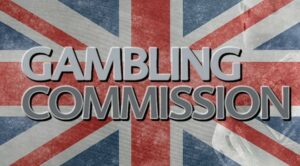Key Moments:
- The proportion of Australians gambling at risky levels has climbed to 19.4 percent, the highest in six years.
- Online gambling has fueled the rise, now constituting over half of all gambling activities nationwide.
- Policy discussions remain ongoing as gambling advertising reform delays draw criticism.
Survey Highlights Surge in Risky Gambling
Findings from a national survey conducted by The Australian National University (ANU) indicate that 19.4 percent of Australian adults have participated in gambling at risky levels within the past year. This represents the highest figure reported in the last six years, based on the Problem Gambling Severity Index which assesses risky behaviors such as wagering more than is affordable.
Despite a general decrease in gambling participation over the past 15 years, Associate Professor Aino Suomi noted that gambling harm has intensified, with a growing portion of the population engaging in higher-risk gambling. According to Suomi, “Gambling harm has intensified – fewer people now gamble but many more do so at risky levels.”
Online Gambling: Shifting Trends and Demographics
The survey identifies online gambling as a significant factor behind the rise in risky gambling behaviors. Suomi highlighted the shift, stating: “This has coincided with a huge spike in online gambling – more than half of all gambling in Australia is now happening online.” She added, “This is accelerating the pace at which gambling is moving into the home. Online gambling is clearly related to more risky gambling, more frequent gambling, and psychological distress.”
Online gambling attracts a distinct demographic, generally skewing younger, with a higher likelihood of full-time employment and higher income. Suomi described the typical online gambler as, “Males aged between 25 and 34 with a trade certificate or diploma who were employed full-time, and in the highest household income bracket, were more likely to gamble online compared to the general population.”
The number of Australians gambling at risky levels is at its highest level in six years, according to the latest national gambling survey from The Australian National University @ourANU pic.twitter.com/eN2k8HwIHJ
— AMA Media (@ama_media) October 1, 2025
Participation Across Gambling Activities
While online wagering continues to gain traction, traditional forms of gambling still play a major role in Australia. The survey found that purchasing lottery tickets is most common, with 41.3 percent of respondents taking part. Other popular activities include scratch and raffle tickets, electronic gambling machines, and race betting.
Sports betting, though representing just 7 percent of gambling activity, experienced significant growth from 4.7 percent in 2024, and displayed the highest online participation rate among all gambling types. As Suomi remarks, “Sports betting sat at just 7 percent, but it saw a considerable increase from 4.7 percent in 2024. It also had by far the highest rate of online gambling compared to other activities.”
Similarly, race betting and lottery or raffle tickets showed high levels of online engagement, mirroring the accessible lawful online gambling options available to Australians. The survey also points out that illegal online gambling products have doubled since last year.
| Gambling Activity | Participation Rate | Observations |
|---|---|---|
| Lottery Tickets | 41.3% | Most common activity |
| Sports Betting | 7% | Highest growth rate and online participation |
| Other Activities | Varied | Scratch tickets, raffle tickets, EGMs, race betting also significant |
Household and Family Impacts
The impact of gambling is not limited to individuals; it is increasingly affecting households. The survey found that harm, arising either from a person’s own gambling or that of someone else in the household, is concentrated among younger groups and families with lower incomes. Suomi remarked, “This is the first time we’ve also seen gambling risk being heightened in families with children, showing that gambling harm is now present in family homes.”
The survey data was collected as part of ANUpoll, authored by Dr. Markus Hahn and Professor Nicholas Biddle alongside Associate Professor Aino Suomi.
Advertising Reform Faces Policy Challenges
The public release of the survey coincides with debate surrounding the federal government’s response to gambling advertising reform. The Albanese government previously committed to act on a 2023 parliamentary inquiry’s recommendations, which included a total ban on gambling advertising; however, action has been delayed until 2025. Critics have expressed concern over these postponements, arguing that the delay has heightened community vulnerability. Meanwhile, government officials cite difficulties related to Senate approval and the financial importance of gambling revenue for sporting entities and media companies.
- Author


